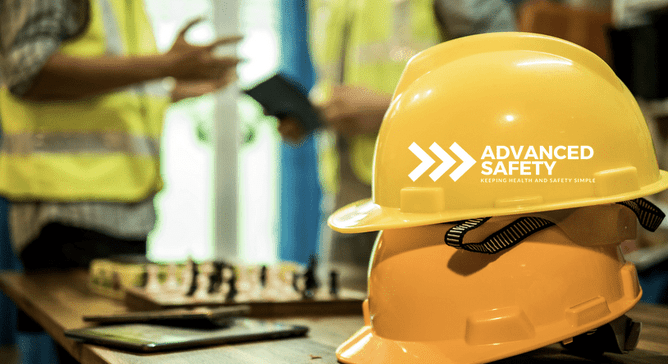Construction sites are dynamic environments where progress and hazards coexist. The importance of health and safety in construction cannot be overstated, as it protects workers, ensures compliance, and contributes to project success.
According to WorkSafe NZ, construction consistently ranks as one of the most hazardous industries in New Zealand, with risks such as falls from heights, exposure to hazardous materials, and the use of heavy machinery.
By proactively addressing these risks, companies not only safeguard lives but also foster trust and loyalty among employees and stakeholders.
Regulations Supporting Health and Safety in Construction
Under the Health and Safety at Work Act 2015 (HSWA), regulations are designed to create safer workplaces by focusing on hazard management, worker training, and emergency preparedness.
Key Regulatory Requirements:
Equipment Usage: Workers must be trained to operate machinery safely, reducing the likelihood of misuse or malfunction.
Hazard Identification: Conducting risk assessments ensures potential dangers are identified and mitigated.
Emergency Plans: Sites must have clear evacuation procedures and accessible first aid resources.
Adhering to these regulations not only keeps workers safe but also minimises project delays and legal liabilities associated with non-compliance.
Want to Improve Your Workplace Safety?
Contact Advanced Safety for expert guidance and support.
Contact Us TodayCommon Hazards in Health and Safety in Construction
Falls from Heights
Falls remain one of the leading causes of injuries on construction sites. To prevent such incidents, measures such as the installation of guardrails, secure scaffolding, and the use of appropriate harness systems must be enforced. Regular inspections of fall protection systems are equally critical to ensure their effectiveness.
Hazardous Materials
Exposure to chemicals and other hazardous substances can result in severe health issues if not managed correctly. Workers should be equipped with appropriate PPE, such as gloves, respirators, and protective eyewear, and trained on safe handling and storage procedures. Ensuring proper ventilation in enclosed spaces can further reduce risks.
Machinery Risks
Heavy equipment, such as cranes and excavators, poses significant risks if not properly maintained or operated. Regular maintenance schedules, combined with comprehensive operator training, are essential to minimising accidents and equipment-related injuries.
Developing a Comprehensive Program for Health and Safety in Construction
A robust safety program addresses risks proactively and promotes worker well-being, ensuring compliance with industry standards.
Key Program Elements:
Safety Training: Educate workers on hazard identification, emergency response, and safe equipment use. Ongoing refresher courses can help employees stay updated on new regulations and best practices.
Regular Inspections: Conduct frequent site audits to identify and address hazards promptly. Consider using external consultants for unbiased safety assessments.
Personal Protective Equipment (PPE): Ensure availability and correct usage of PPE such as helmets, high-visibility clothing, and safety boots to minimise injuries.
Promoting worker participation in safety initiatives enhances the effectiveness of these programs, as employees are often best positioned to identify potential hazards.
Emergency Preparedness in Construction
Being prepared for emergencies is a cornerstone of health and safety in construction. Proactive planning minimises harm and ensures a swift response when incidents occur.
Fire Drills
Regularly practised fire drills ensure workers know evacuation routes and assembly points. Fire extinguishers must be accessible and inspected regularly.
Evacuation Plans
Well-defined evacuation plans must be clearly communicated and practised regularly to ensure all workers know what to do during an emergency. Include designated roles, such as fire wardens, to guide workers to safety.
First Aid Availability
Sites should have trained first aiders, well-stocked kits, and clear protocols for contacting emergency services. Workers should also be briefed on reporting procedures to ensure timely responses to injuries.
The Role of Management in Health and Safety in Construction
Leadership and Culture
Management must prioritise health and safety in construction, demonstrating commitment through visible actions and decisions. This includes attending safety briefings, reinforcing safe practices, and allocating adequate resources for safety initiatives.
Open Communication
Encourage workers to report hazards and suggest improvements via toolbox talks and safety meetings. Open communication fosters a sense of accountability and empowers employees to play an active role in maintaining safety.
Continual Improvement
Safety is an ongoing process. By regularly reviewing protocols, incorporating lessons from near-misses, and embracing new technologies, organisations can adapt to evolving risks and maintain high standards.
Innovations Enhancing Health and Safety in Construction
Modern technology offers new ways to improve health and safety in construction. Embracing innovation enhances traditional safety measures and provides valuable insights into risk management.
Examples of Innovations:
Drones: Efficient site inspections that identify hazards in hard-to-reach areas.
Wearable Devices: Smart helmets and vests monitor worker vitals and alert supervisors of potential issues.
AI Systems: Predictive analytics to identify high-risk activities and mitigate potential incidents before they occur.
By integrating these technologies into safety protocols, construction companies can create safer, more efficient worksites while setting themselves apart as leaders in innovation.
Health and Safety in Construction: Conclusion
Prioritising health and safety in construction is vital for saving lives, ensuring compliance, and achieving project success. By implementing comprehensive safety programs, fostering a culture of safety, and adhering to regulations, construction companies can create a secure and productive environment.


